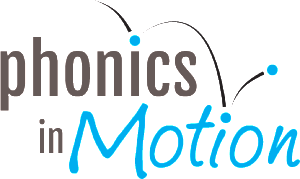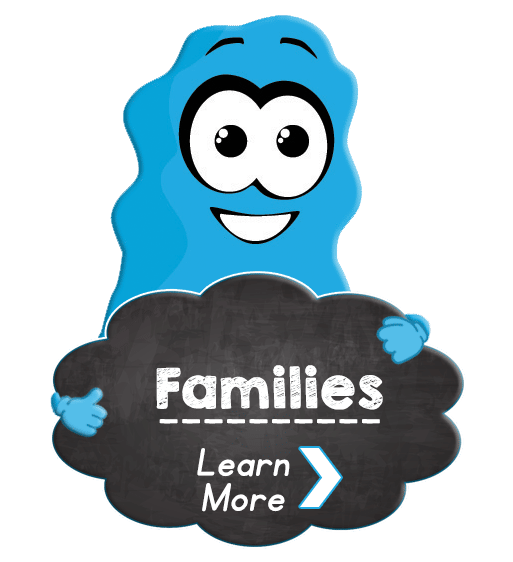Why Is Phonological Awareness Important?
Phonological awareness is an essential early literacy skill that children need to develop before they can learn to read. It involves the ability to recognize and manipulate the sounds of language, which includes recognizing and producing rhymes, breaking words into syllables, and identifying individual sounds within words.
Phonological awareness is critical for developing reading and spelling skills and is a fundamental component of early literacy instruction.
What Is Phonological Awareness?
Phonological awareness refers to the ability to identify and manipulate the sounds of language. It is a broad skill that includes several sub-skills, such as syllable awareness, rhyme awareness, and phonemic awareness. It is essential for developing phonics skills, which are the foundation of reading and spelling. Children with good phonological awareness skills are better equipped to decode and spell words, which leads to better reading comprehension and academic success.
The Difference Between Phonological Awareness and Phonemic Awareness
Phonological awareness and phonemic awareness are often used interchangeably, but they are slightly different. Phonemic awareness refers specifically to the ability to identify and manipulate individual sounds, or phonemes, within words. In contrast, phonological awareness is a broader skill that includes phonemic awareness and other sound-related skills, such as syllable and rhyme awareness. While both are essential for developing reading and spelling skills, phonemic awareness is considered a more advanced skill that builds upon phonological awareness.
Why is Phonological Awareness Important In Early Years?
Phonological awareness is crucial for developing reading and spelling skills, and it’s essential to start teaching it in the early years. Research has shown that children who have a solid foundation at the beginning of kindergarten are more likely to become successful readers later on. When children are taught to recognize and manipulate the sounds of language, they are better able to understand how words are formed and how they can be decoded and spelled.
This skillset is particularly important for children who are learning to read in a language that is not their first language. In these cases, phonological awareness instruction can help children learn the sound structure of the new language and develop the skills they need to read and spell.
Reason 1. Phonological Awareness Develops Reading Skills
Phonological awareness is critical for developing reading skills because it helps children understand the relationship between sounds and letters. When children can recognize and manipulate the sounds of language, they are better able to decode and read words. This is especially important for beginning readers who are just learning to read and may struggle with decoding unfamiliar words.
Reason 2. Phonological Awareness Improves Spelling Skills
Developing this skillset is also crucial for developing spelling skills because it helps children understand how words are formed and how sounds correspond to letters. When children can recognize and manipulate the sounds of language, they are better able to spell words correctly. This is particularly important for English language learners who may struggle with the complex sound structure of the English language.
Reason 3. Early Intervention Is Important
Early intervention can help prevent reading difficulties and improve outcomes for struggling readers. When children are identified as at risk for reading difficulties, targeted instruction can help them develop the skills they need to become successful readers. Early intervention is particularly important because children who struggle with reading are at risk for academic and social difficulties later on.
Reason 4. Phonological Awareness Helps Language Learning
Phonological awareness is essential for language learning because it helps children understand the sound structure of language. When children are exposed to rich and varied language experiences, they are better able to learn and use language effectively. This is particularly important for children who are learning a second language, as phonological awareness instruction can help them develop the skills they need to read and spell in the new language.
Reason 5. Phonological Awareness Aids Cognitive Development
Phonological awareness also plays a role in cognitive development because it requires children to use their working memory and attention to recognize and manipulate sounds. When children develop phonological awareness skills, they are also developing important cognitive skills that will serve them well in other areas of learning and development.
Reason 6. Solid Phonological Awareness Predicts Overall Academic Success
Phonological awareness is critical for overall academic success because it lays the foundation for reading, writing, and spelling skills. When children have strong phonological awareness skills, they are better able to learn and use language effectively, which can lead to improved outcomes in other academic areas as well. Phonological awareness is an essential pre-reading skill that all children need to develop in order to become successful readers and learners.
Why Kids Struggle With Phonological Awareness
Some children may struggle with developing phonological awareness skills. This could be due to various factors, such as language difficulties, hearing impairment, or lack of exposure to spoken language. Children who have not had many opportunities to listen to spoken language or who have not been taught how to recognize and manipulate the sounds of language may also struggle with phonological awareness.
Reason 1. Language Difficulties
Children with language difficulties may have difficulty developing phonological awareness skills. These children may have trouble distinguishing between similar sounds or blending sounds together to form words. They may also have difficulty breaking words down into individual sounds or recognizing rhyming patterns. Children with language difficulties may benefit from targeted instruction and intervention to help them develop phonological awareness skills.
Reason 2. Hearing Impairment
Children with hearing impairment may also have difficulty developing phonological awareness skills. These children may not be able to hear all the sounds in words, which can make it challenging for them to recognize and manipulate the sounds of language. Children with hearing impairment may benefit from hearing aids, cochlear implants, or other assistive technology that can help them hear sounds more clearly.
Reason 3. Lack of Exposure to Spoken Language
Children who have not had many opportunities to listen to spoken language may also struggle with phonological awareness. This could be due to various reasons, such as growing up in a language-poor environment or not being exposed to rich and varied language experiences. Children who do not have access to books, songs, or conversations with adults may not have the same opportunities to develop phonological awareness skills as children who do.
Phonological Awareness Skills To Teach
There are several phonological awareness skills that teachers and parents can teach children to help them develop their phonics skills. These skills are typically taught in a sequential order, starting with the easiest and progressing to more difficult skills.
Skill 1. Syllable Awareness
Syllable awareness is the ability to recognize and produce syllables within words. Children should be taught to recognize the number of syllables in a word and to produce words with a specific number of syllables. For example, children can be taught to recognize that “apple” has two syllables and “banana” has three syllables.
Skill 2. Rhyme Awareness
Rhyme awareness is the ability to recognize and produce rhyming words. Children should be taught to recognize when two words rhyme and to produce words that rhyme with a given word. For example, children can be taught to recognize that “cat” and “hat” rhyme and to produce words that rhyme with “hat,” such as “rat,” “mat,” or “bat.”
Skill 3. Phonemic Awareness
Phonemic awareness is the ability to recognize and manipulate individual sounds, or phonemes, within words. Children should be taught to recognize the sounds in words and to blend them together to form words. For example, children can be taught to recognize that the word “cat” is made up of three sounds, /k/, /a/, and /t/, and to blend these sounds together to form the word “cat.”
Skill 4. Sound Isolation
Sound isolation is the ability to recognize individual sounds within words. Children should be taught to recognize the first, middle, and last sounds in words. For example, children can be taught to recognize that the first sound in “dog” is /d/, the middle sound is /o/, and the last sound is /g/.
Skill 5. Sound Blending
Sound blending is the ability to blend individual sounds together to form words. Children should be taught to blend sounds together to form words and to recognize when a word has been blended correctly or incorrectly. For example, children can be given the sounds /b/, /a/, and /t/ and asked to blend them together to form the word “bat.”
Skill 6. Sound Segmentation
Sound segmentation is the ability to break words down into individual sounds. Children should be taught to recognize how many sounds are in a word and to break words down into their individual sounds. For example, children can be asked to segment the word “cat” into its three sounds, /k/, /a/, and /t/.
How Phonics in Motion Teaches Phonological Awareness: Child-Centered Learning
Teaching phonological awareness in a child-centered way is essential for several reasons. Firstly, children learn best when they are actively engaged in the learning process. By making instruction fun and interactive, children are more likely to stay engaged and motivated.
Secondly, child-centered instruction allows children to learn at their own pace and in a way that is best suited to their learning style. This approach promotes a sense of ownership and agency, which can lead to increased confidence and a love of learning.
At the core of Phonics in Motion is a child-centered approach to literacy instruction. This approach values the individuality of each child and recognizes that learning is a dynamic and personal process. Through the use of story and movement, children are invited to participate in the learning process actively. By tapping into their natural desire to move and explore, children can develop a deep understanding of phonological awareness concepts.
Furthermore, Phonics in Motion recognizes that children have different learning styles and preferences. Some children may learn best through visual or kinesthetic experiences, while others may prefer auditory experiences. The program offers a variety of activities and experiences that cater to different learning styles, ensuring that every child has the opportunity to succeed.
Teaching phonological awareness in a child-centered way also allows for differentiation and individualization. Children who are struggling with a particular concept can receive additional support and guidance, while children who are ready to move on can be challenged with more advanced activities. This individualized approach ensures that every child is challenged and supported, leading to optimal learning outcomes.
Teaching literacy in a child-centered way is essential for promoting engagement, motivation, confidence, and a love of learning. Phonics in Motion’s core value of child-centered instruction ensures that every child has the opportunity to succeed and thrive. Phonics in Motion promotes an active and dynamic approach to learning, which leads to deep and meaningful learning outcomes.







